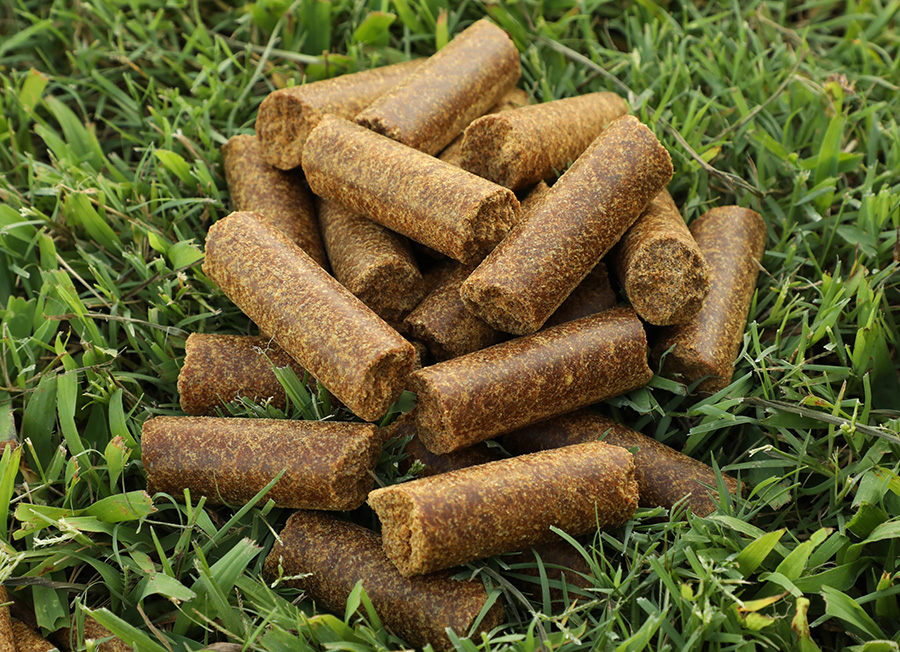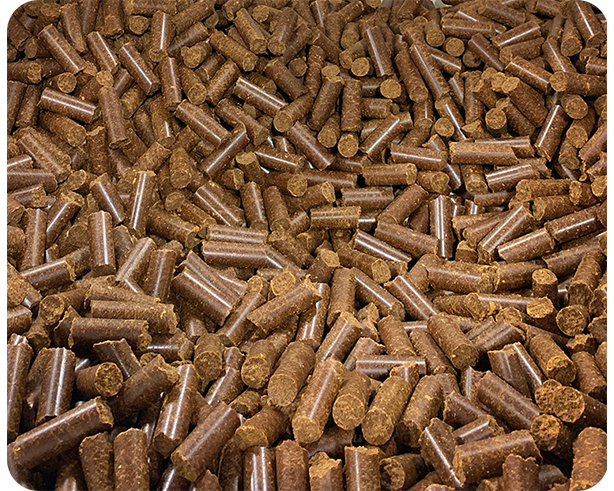You might call it the “holy grail” of the cattle industry, the secret recipe every producer is trying to pin down — how to capture more value on sale day without breaking the bank.
Value-add programs are everywhere, all touting premium prices for genetic merit, vaccination protocols, age verification and more. Each program is designed to help producers put more dollars to the bottom line and build the reputation of their operations. And ask anyone in the business of buying and selling cattle, reputation matters.
But these pre-conditioning programs have become the industry norm and premiums can vary. While following effective vaccination protocols, pursuing quality genetics and practicing good handling etiquette are all crucial to ensuring calves have the ability to perform at the next stage, it’s important not to overlook the foundation you’re building on — nutrition.
“Your nutrition program really lays the groundwork for health and performance as that calf grows,” says Dusty Turner, owner of MasterHand Milling. “Distillers cubes are a phenomenal tool for producers to use from the cow pasture all the way to feeder pen to capitalize at each stage.”
With a nutrient guarantee of 7% fat and 28% protein, MasterHand Milling’s distillers grain range cubes and pellets provide a uniquely versatile solution for producers looking to boost efficiency and profitability, Turner said.

Adding Value at Every Stage
One of the biggest benefits of the DDG cube is being able to utilize it at each phase of production, Turner said. On the cow-calf side, the concentrated energy and protein help boost cow body scores, improve breeding percentages and increase milk production. More calves on the ground and heavier, healthier calves at weaning means more for the bottom line. Plus, calves get started eating the cubes while on the cow and are ready for the transition at weaning time.
Avoiding stress and sickness is the key factor at weaning, and proper nutrition plays a leading role in achieving that goal. DDG cubes or pellets work well as a weaning ration as they are rich in energy and protein without excess starch. Any starch in a ration is often the root cause of health problems including acidosis that can impact performance later. Research from Oklahoma State University shows that gains, feed efficiency and quality grade decrease significantly each time an animal is treated for illness.
The concentrated nutrients in DDG cubes encourage early bone and muscle growth without layering on excess fat. This type of growth in the early stages of life keeps the rumen tight and efficient, reduces necessary forage intake and leads to leaner, more productive cattle in later stages. The cubes are also naturally palatable, drawing calves to the bunk quickly and reducing the stress period. Pairing DDG cubes with an effective health and management program at weaning time can help producers consistently grow calves that are not only prepared with a strong immune system, but are also started on the right foot to reach their genetic potential for producing a quality carcass — a value both producers and buyers can appreciate.
In the stocker and yearling phase, it’s all about boosting gain and optimizing cattle for the feedyard. Through research at Oklahoma State University, DDG cubes have shown not only to significantly increase gains of cattle on grass, but also to set them on a growth curve to gain more, finish sooner and convert more efficiently in the feedlot. Beyond that, carcass data shows DDG-fed cattle were more likely to grade choice than unfed cattle. Similar to a pre-conditioning program at weaning, feeding DDG cubes to yearling cattle on grass is an innovative new way for stocker and yearling operations to add value for their feeder buyers.
Trial Design & Locations
Some quick background before we tackle the data. MasterHand Milling first partnered with the OSU Cooperate Extension Service and Dr. Paul Beck in 2019 by donating feed to the research projects being conducted by graduate students studying ruminant nutrition. The trials are conducted by the student research teams including cattle care, data collection and reporting.
The primary locations for these trials are in Bessie, Fort Supply and Haskell, Oklahoma. Additional studies have also been conducted in Lenapah, Oklahoma and Batesville, Arkansas. For the sake of today’s discussion, we’ll focus on the three primary research sites.
Is the Value Really There?
There’s no question that buyers at all stages are taking notice and paying more for pre-conditioned calves. With input and labor costs on the rise however, many producers question if value-added programs really offer enough profit to offset the costs. Among researchers and industry leaders, the consensus is yes, taking a few specific extra steps can make a big difference in your bottom line.
The trick is combining the right value-add steps with a nutrition program that sets the stage for efficient, valuable gain — not just adding pounds of flesh. MHM distillers cubes provide the right combination of high fat and protein to do just that. Dr. Paul Beck, associate professor at Oklahoma State University, said it best:
“While it is true that we probably should precondition cattle because it is the right thing to do for the calf, the economics of preconditioning indicate it can be profitable for the producer. If producers can efficiently feed calves to gain 1.75 to 2 pounds per day, the additional weight sold, reduction in shrink, and the increased value of the calf will more than cover the cost.”
In today’s beef industry, buyers are willing to bid higher for cattle they can have confidence in. Building a complete value-add program based on the right nutrition can help producers create “reputation cattle” that buyers know will consistently perform from weaning to the rail.
Trial 1 – Bessie, Oklahoma
The 2021 grazing trial at Bessie was a new design testing supplementation rate through the summer. Three treatment groups included an unsupplemented control, a low supplement rate at 2 lbs. per head per day and a high supplement rate at 4 lbs. per head per day.
The low supplementation cattle gained 0.67 lbs. per head more on average than the control, while the higher supplementation cattle gained an additional 0.92 over the control.
After factoring in all input costs including cattle purchase, pasture rent, processing, mineral and feed, cost of gains for the control, low supplement and high supplement groups were $0.73, $0.70 and $0.82 respectively. An estimated breakeven price per pound was calculated for each group with the control group at $1.46, low supplement at $1.36 and high supplement at $1.37.
This data shows the potential value to be added for producers who invest in a distillers cube summer feed program. At 2 lbs. per head per day, the additional gain was able to reduce the breakeven price, regardless of the added feed cost per head.
Preliminary feedlot data has been collected on the Bessie cattle at time of reimplant. Fed cattle went into the feedlot weighing 100+ lbs. more than the control cattle. After 90 days on feed, the heavier fed cattle are maintaining a higher average daily gain than the lighter cattle with roughly the same feed conversion rate.
Trial 2 – Haskell, Oklahoma
The 2021 study at Haskell was the second year of a project studying the impacts of pasture fertilization and feed supplementation on cattle gains. The cattle were broken into three treatment groups: 1) no supplement control, 2) Fertilized pasture and fed 2.75 lbs. per head per day, and 3) Unfertilized pasture and fed 5.9 lbs. per head per day.
As expected, the fed cattle outperformed unfed cattle with Group 2 gaining an average of 2.44 lbs. over the 1.89 lb. average of the control. Group 3 at the higher supplementation rate average 2.66 lbs. Both Group 2 and 3 gained over 3 lbs. for the first half of the season.
After all input costs, not including pasture fertilization, cost of gain was $0.48, $0.62, and $0.83 respectively for Groups 1, 2 and 3. Breakeven prices per pound came to $1.30, $1.32 and $1.39. These values indicate a point of diminishing return when feeding at rates above 2-3 lbs. per head.
Early feedlot data from this trial are very interesting at they pertain to the widely accepted theory that feeding cattle before sending them to the feedyard negatively impacts feedyard performance. As in the Bessie trial, fed cattle weighed more going in and will take fewer days on feed to finish.
At 90 days on feed, control group cattle were gaining 3.86 lbs., while low supplement cattle were at 3.93 and high supplement cattle were gaining 4.38. Fed cattle had better dry matter conversion and a lower cost of gain than the control group.
Trial 3 – Fort Supply, Oklahoma
Fort Supply also had a new trial design in 2021 similar to the set up at Bessie. This trial split into four groups: 1) no supplement control, 2) fed 2 lbs. per day, 3) fed 4 lbs. per day, and 4) fed 6 lbs. per day.
As in previous studies, fed cattle gained more with increased supplementation. Average daily gains for the summer were 1.51 lbs. for the control group, 2.17 for Group 2, 2.23 for Group 3 and 2.34 for Group 4. Cattle maintained a steady gain through the season.
Cost of gain values were calculated at $0.63, $0.65, $0.82 and $0.93 respectively. The lowest breakeven cost was in Group 2 at $1.26, indicating the same point of diminishing return at 2-3 lbs. as seen in other trials.
Reimplant data showed a decrease in daily gains and higher dry matter conversion on cattle fed at the higher rates on grass. This differs from findings in previous studies. The difference in performance is likely due to the types of cattle used in each trial. At Bessie and Haskell, the cattle were high quality Ultrablack (Brangus X Angus) steers purchased from a registered Brangus operation. The Fort Supply cattle consisted of plainer, sale barn type steers. It makes sense to generally expect cattle with better genetic potential to maintain higher performance than animals without that same genetic backing.







